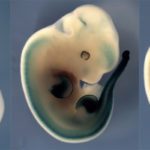Link to Pubmed [PMID] – 18392654
Mamm. Genome 2008 Apr;19(4):272-8
SHFM3 is a limb malformation characterized by the absence of central digits. It has been shown that this condition is associated with tandem duplications of about 500 kb at 10q24. The Dactylaplasia mice display equivalent limb defects and the two corresponding alleles (Dac1j and Dac2j) map in the region syntenic with the duplications in SHFM3. Dac1j was shown to be associated with an insertion of an unspecified ETn-like mouse endogenous transposon upstream of the Fbxw4 gene. Dac2j was also thought to be an insertion or a small inversion in intron 5 of Fbxw4, but the breakpoints and the exact molecular lesion have not yet been characterized. Here we report precise mapping and characterization of these alleles. We failed to identify any copy number differences within the SHFM3 orthologous genomic locus between Dac mutant and wild-type littermates, showing that the Dactylaplasia alleles are not associated with duplications of the region, in contrast with the described human SHFM3 cases. We further show that both Dac1j and Dac2j are caused by insertions of MusD retroelements that share 98% sequence identity. The differences between the nature of the human and mouse genomic abnormalities argue against models proposed so far that either envisioned SHFM3 as a local trisomy or Dac as a mutant allele of Fbxw4. Instead, both genetic conditions might lead to complex alterations of gene regulation mechanisms that would impair limb morphogenesis. Interestingly, the Dac2j mutation occurs within a highly conserved element that may represent a regulatory sequence for a neighboring gene.

